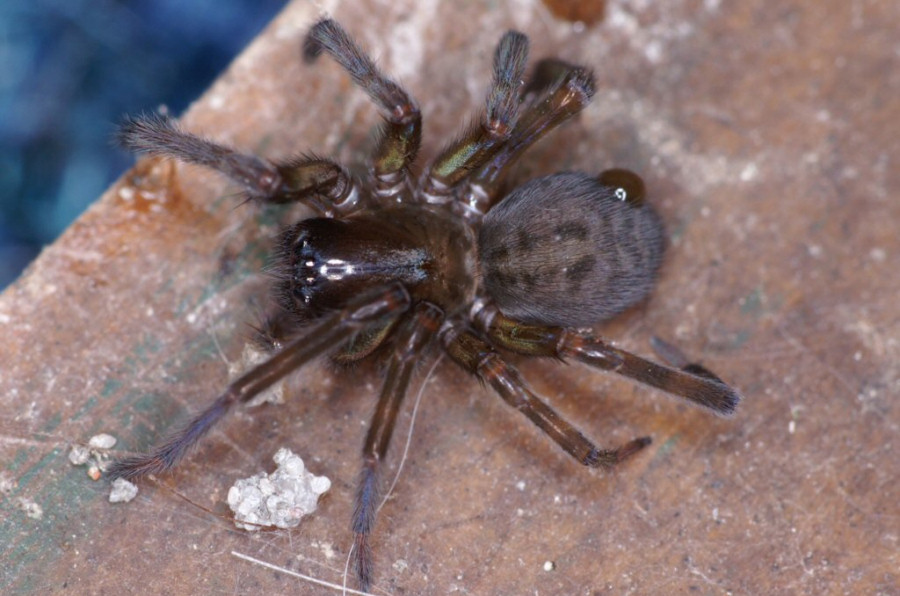
Amaurobius ferox
Back <------

Amaurobius ferox
The family Amaurobiidae contains only one genus, consisting of 5 species. Most members hide in holes in trees or man made constructions. Their size is between 7 and 12 mm. The web usually extends around the entrance of the hole. These spiders can also be spotted inside our houses during the night. The Amaurobiidae are also called night spiders because they are active at night. All five species are quite large with firm legs and may live for several years. The head-breast part is pear shaped and the spider resembles the Coelotes. But when identifying the spider, the dark raised head part will remove any doubt. Another important family characteristic is the wooly combed catching silk, which often has a shiny blue color. It is a cribellate web. The spider combs its silk with a comb or calamistrum located on her rear legs. The comb is made of a row of small, stiff hairs. |
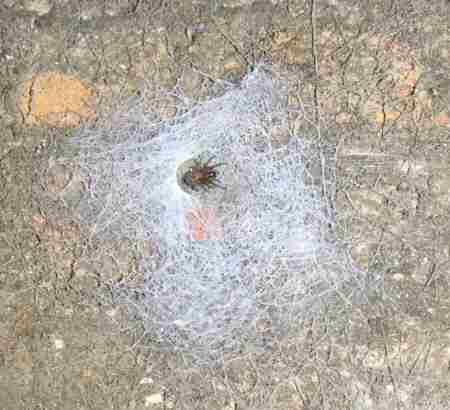 |
 |
|
The silk comes from an organ called the cribellum and contains of a lot of small spinnerets that deliver the small threads of silk. All spiders with a cribellum (Amaurobiidae, Eresidae, Uloboridae and Dictynidae) are incorporated in a special group called the Cribellatae. See also: The properties of silk How does this wooly catching silk work? Around two closely located normal catching threads lies the wooly, combed catching thread. When an insect comes in contact with the wooly web, the barbed hooks of the insect get meshed into the wooly silk. The threads of the wooly silk can stretch to ten times its original size. Therefore as the insect tries to free itself from the silk, it finds itself more and more snarled up into the mesh of the silk that keeps on stretching. All this time the spider is watching the show. After the insect is debilitated, the spider makes its move and kills the prey. The members of the Amaurobiidae family have a most peculiar and unselfish characteristic in taking care of their offspring. The female becomes mature during her second year of life. She lays only about 40 eggs and spins a closed breeding chamber where she stays with her eggs. After the spiderlings have consumed the egg yolk, they eat their mother before they emerge from the chamber. |
|
Genus Amaurobius
 |
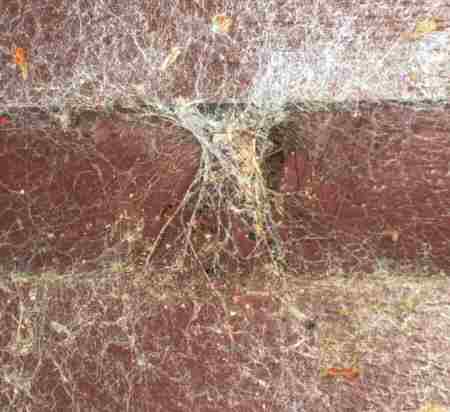 |
| Amaurobius fenestralis | Web of Amaurobius fenestralis |
 |
|
| Amaurobius similis | |
 |
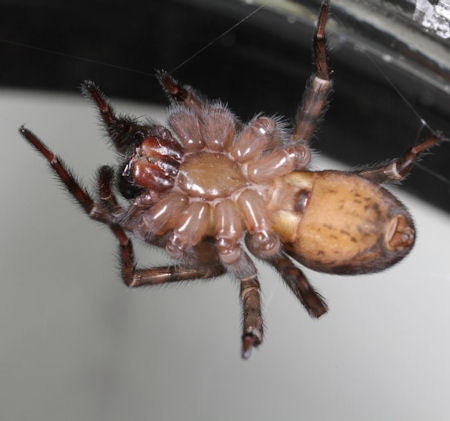 |
| Amaurobius similis | Amaurobius similis |
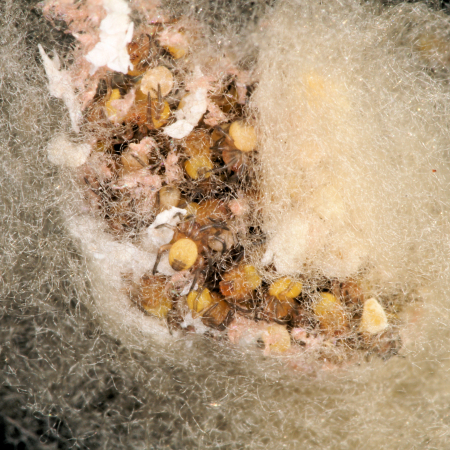 |
|
| Amaurobius juvenile | Amaurobius juvenile |
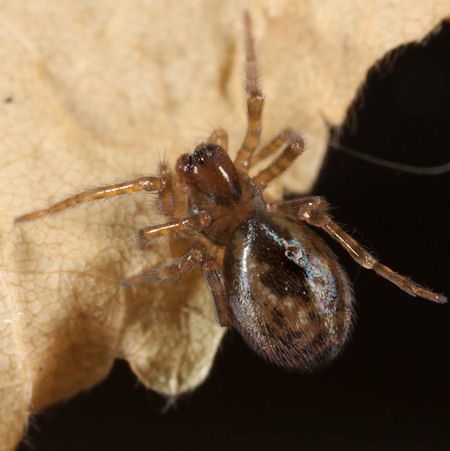 |
 |
| Amaurobius fenestralis juvenile | Amaurobius ferox |
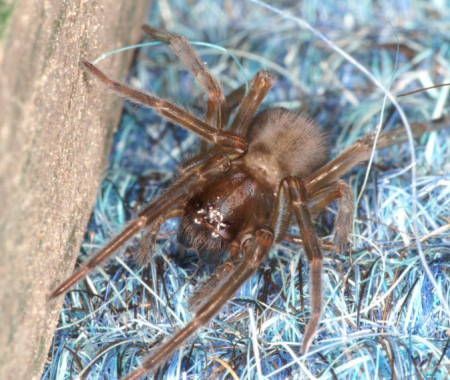 |
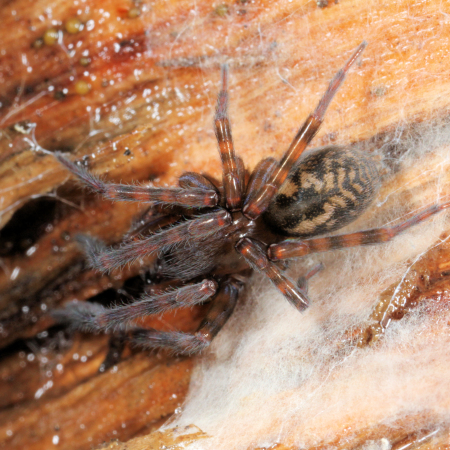 |
| Amaurobius ferox | Amaurobius ferox |
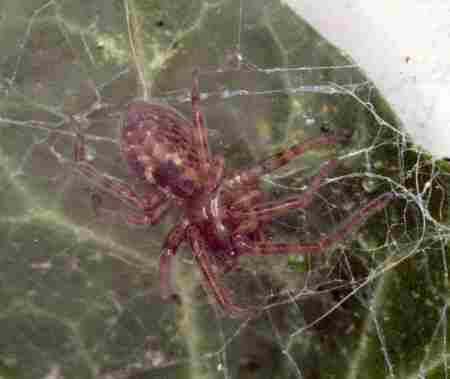 |
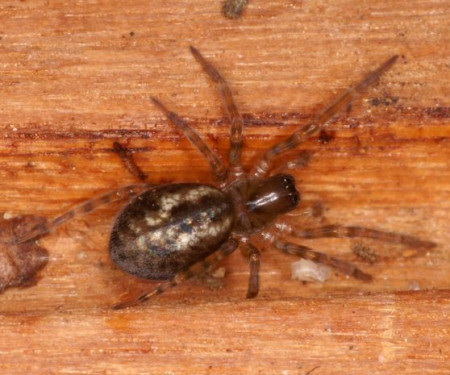 |
| Amaurobius similis | Amaurobius similis |
 |
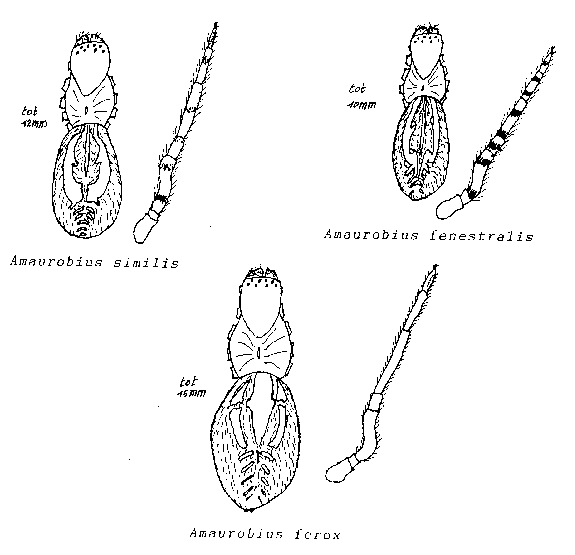 |
| Calllobius claustrarius (Amaurobius claustrarius) (by Inger Leemans) |
|

Genus Coelotes
There are three known species in NW-Europe. The spider lives in forests where they construct a tubular funnel webs on the ground between wood and rocks.
A collar of silk is spun around the opening of the tube. The funnel is about 10 cm deep.
The female feeds her young by regurgitation and by sharing large prey until she dies. The size of these spiders varies between 8 and 15mm.
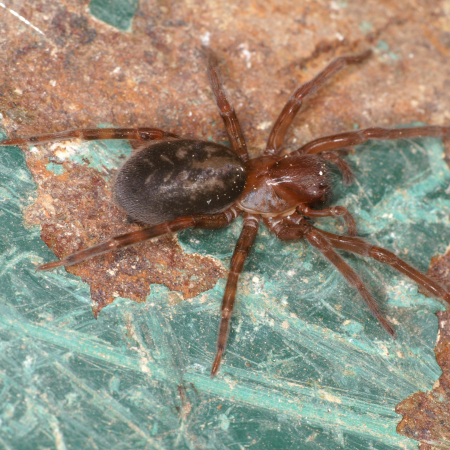 |
 |
| Coelotes terrestris (similar to Coelotes atropos) | Coelotes terrestris |
Ed Nieuwenhuys, 22 march 2023
4 june 2020 ,29 December 2019, 3 november 2012 ,29 December 2011, 10 July 2010, 9 april 2005, 9 december 1997
This text was translated from an article published by: Myriam Meerhaege and Bryan Goethals from the Werkgroep Inheemse Spinnen (WIS) Volume 1, number 1, 1997